Lost Clubs: The City Liberal Club (1874-1921)
Including the revelation of what happened to its Gladstone statue...
Having recently looked at the ‘lost’ clubhouses of two leading conservative clubs of London, the Carlton Club and the Junior Carlton Club, I thought a spot of political balance was overdue, and here I look at the vanished City Liberal Club.
The bay window of the City Liberal Club on Walbrook. (Picture Credit: Joseph Hatton, Club-Land, London and Provincial (London: J. S. Virtue, 1890).)
There has been a long history of clubs in the City of London. These draw on the City’s own centuries-old traditions of Livery Companies, and also the City’s more informal ward clubs. But in 1832, the City’s club culture began to be more explicitly influenced by the clubs of London’s West End, with the foundation of the City of London Club - whose building opened two years later, and which is still going strong. A variety of City clubs spun off. Some, like the Gresham Club, are long-defunct, while others like the City University Club still survive today.
The City Liberal Club’s 1877-1921 clubhouse was located on the west side of Walbrook. (Picture credit: Ordnance Survey map, 1900.)
The City’s political clubs served a unique purpose. They were a bridgehead between the financiers of the City of London, and the UK political parties. The first of these establishments was the City Carlton Club, founded in 1868, which continued until it was bombed out in 1940. The City Liberal Club was founded in 1874, in direct opposition to it. Charles Dickens Junior wrote in Dickens’ Dictionary of London (1879) that it:
“Was instituted shortly after the General Election of 1874, for the purpose of promoting intercourse between Liberals, and to afford means for remedying the disorganisation into which the Liberal party had fallen in the city of London.”
This captures something of its multiple purposes. As I observed in Club Government, electoral defeat tended to be much more of a catalyst for the setting up of political clubs, than victory. Freshly-defeated parties needed to regroup and reorganise - and clubs offered a route for that. The Liberal Party, comfortably elected in the general election of 1868, had been unexpectedly defeated in the ensuing election of 1874. The City Liberal Club was not the only manifestation of this post-election regrouping: the Liberals also set up the Devonshire Club on St. James’s Street later that year.
Dickens hinted at another factor: The City of London was not just another parliamentary constituency. Since the Middle Ages, it had returned no fewer than four MPs, and was tightly contested for this rich electoral harvest in such a small space. And it had changed from delivering three out of four seats to the Liberals in 1868…
Election figures for the 1868 general election in the City of London constituency, F. W. S. Craig, British Parliamentary Election Results, 1832-1885 (Basingstoke: Macmillan, 1977), p. 6.
…to three out of four seats for the Conservatives in 1874. This was especially troubling for the Liberals, as their support barely rose by more than a few hundred votes from 1868-1874, whilst the Conservative tally rose by some 2,000 votes.
Election figures for the 1874 general election in the City of London constituency, F. W. S. Craig, British Parliamentary Election Results, 1832-1885 (Basingstoke: Macmillan, 1977), p. 6.
It therefore seemed fully justified to build a dedicated Liberal club, to act as a rallying-point for this important constituency - especially in the light of an already-active City Carlton Club.
G. E. Grayson’s clubhouse for the City Liberal Club, opened in 1877. (Picture Credit: Illustrated London News, 1 June 1878.)
A temporary clubhouse was opened at 71 Queen Street, EC4, in 1874 (the building has long since been demolished), while the Club launched a design competition, and the winner was Liverpool-based George Enoch Grayson, who mainly designed buildings across north-west England, and north Wales.
Plans of the building. (Picture credit: Building News, 11 January 1878.)
Grayson’s plans were selected over alternative submissions by architects such as T. Chatfield Clarke. A site was found on the west side of Walbrook, in the heart of the City, and the new clubhouse opened in 1877.
Detail on the building. (Picture credit: Building News, 11 January 1878.)
Candidates were fast-tracked to the City Liberal Club if they had, “rendered special services to the Liberal Cause.” Members unsurprisingly tended to straddle the worlds of finance and politics, as exemplified by the banker and Liberal MP Richard Biddulph Martin, the Club’s Chairman in 1887.
In 1879, the entry fee was £21 and the subscription was £10, 10s - which would have placed it around the upper end of the “middle tier” of London club pricing - it was identical to the cost of the civil servant-oriented Whitehall Club on Parliament Street, and significently more than the £5, 5s entry fee and £6, 6s subscription of the City Carlton Club, but still considerably less expensive than, say, the £31, 10s entry fee and £15, 15s subscription charged by the heavily aristocratic Turf Club on Piccadilly.
Illustration of the interior by William Luker Jr. (Picture credit: W. J. Loftie, London City (London: Leadenhall Press, 1891).)
Financial hardship caused the Club to close down in 1921. This was consistent with the financial collapse of the machinery of the Liberal Party during the Lloyd George coalition, as it was relegated to third-party status after 1918.
As a political club, the City Liberal Club hosted a variety of widely-reported speeches in its heyday, seeming to have favoured speakers from the more whiggish end of the Liberal Party, from the 2nd Earl Granville in 1883, to the 5th Earl of Rosebery in 1901.
Illustration by Thomas Walter Wilson: ‘The Position of the Liberal Party - Lord Rosebery speaking at the City Liberal Club, 19 July’. (Picture Credit: Illustrated London News, 21 July 1901.)
Granville’s purpose in speaking in 1883 was to unveil a new statue of Gladstone by Edward Onslow Ford, which can be seen below, photographed on the Club’s main staircase in 1915. The staircase itself can be seen in the corresponding floor plans above, in the heart of the clubhouse.
Bedford Lemere, ‘'The hall and staircase in the City Liberal Club, looking towards a statue of William Gladstone’ (1915). (Photo credit: BL23001/001, series HBL01 The Bedford Lemere collection, Historic England.)
On seeing the above photograph, I swiftly recognised that statue. It has long been a staple of the National Liberal Club (NLC).
Early photographs of the Dining Room of the NLC, from the 1880s, 1890s & 1900s, show that there was no Gladstone statue in its earlier years - something confirmed by the below photograph, from 1905:
The Dining Room of the National Liberal Club in 1905 - still without the Gladstone statue. (Photo credit: Anonymous, The National Liberal Club (London: National Liberal Club, 1905.)
However, by the time the below photograph was taken in 1933, it is clear that the National Liberal Club had acquired the 1883 Gladstone statue by Onslow Ford, which had formerly stood in the stairwell of the City Liberal Club.
The Dining Room of the National Liberal Club in 1933 - which by this time had acquired the City Liberal Club’s 1883 Gladstone statue. (Photo credit: Anonymous, The National Liberal Club (London: National Liberal Club, 1933.)
The NLC’s most recent art guide - Michael Meadowcroft, A Guide to the Works of Arts of the National Liberal Club, London, 2nd ed. (London: 2011) - states that the statue was “presented by Henry Neville Gladstone (later the first Baron Gladstone of Hawarden)” in 1922.
Digging a little further, I found that the Westminster Gazette for Thursday 6 July 1922 confirmed in a front-page story on the previous day’s unveiling ceremony at the NLC: “The statue, formerly the property of the defunct City Liberal Club, was acquired by Mr. Gladstone through the help of Mr. Mackenzie Livingstone, a member of the committee of the NLC.” It appears that Henry Gladstone, who acquired the statue of his father around December 1921, did so with the intention of donating it to the NLC.
The City Liberal Club’s 1883 Gladstone statue, in the Dining Room of the National Liberal Club today. (Photo credit: National Liberal Club website.)
The statue can still be seen there today, over a century on from the closure of the City Liberal Club.

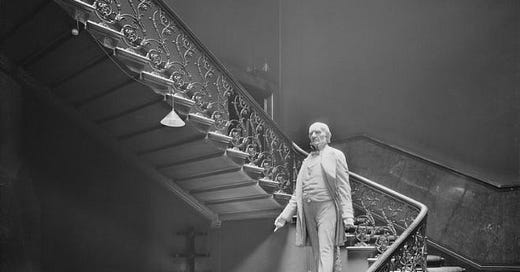


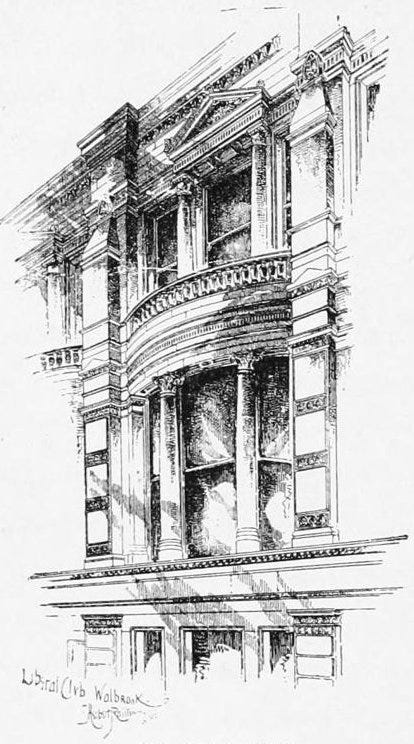



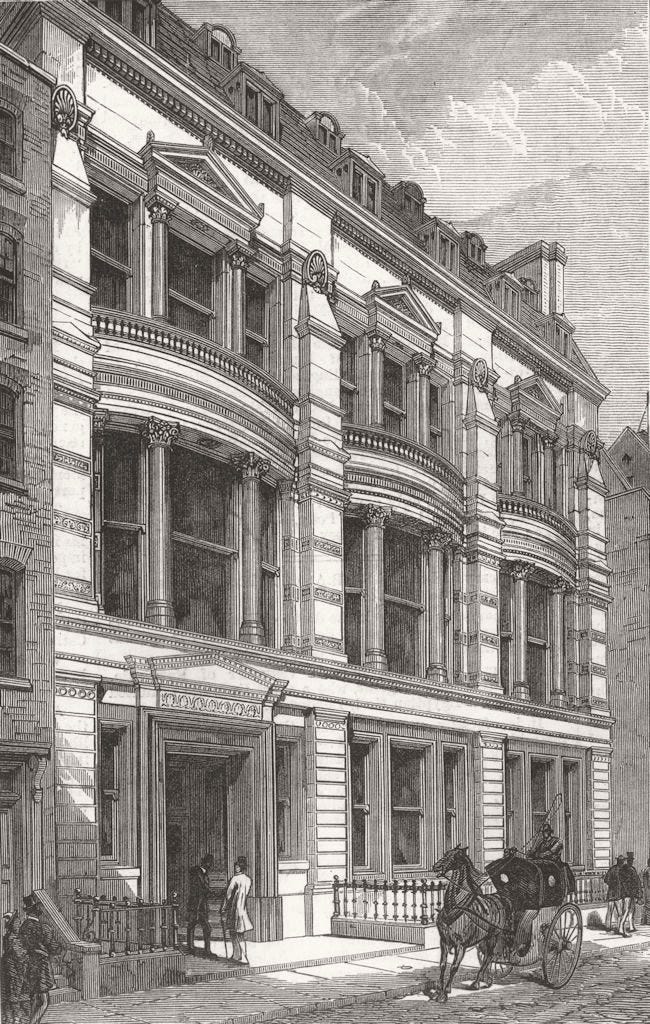
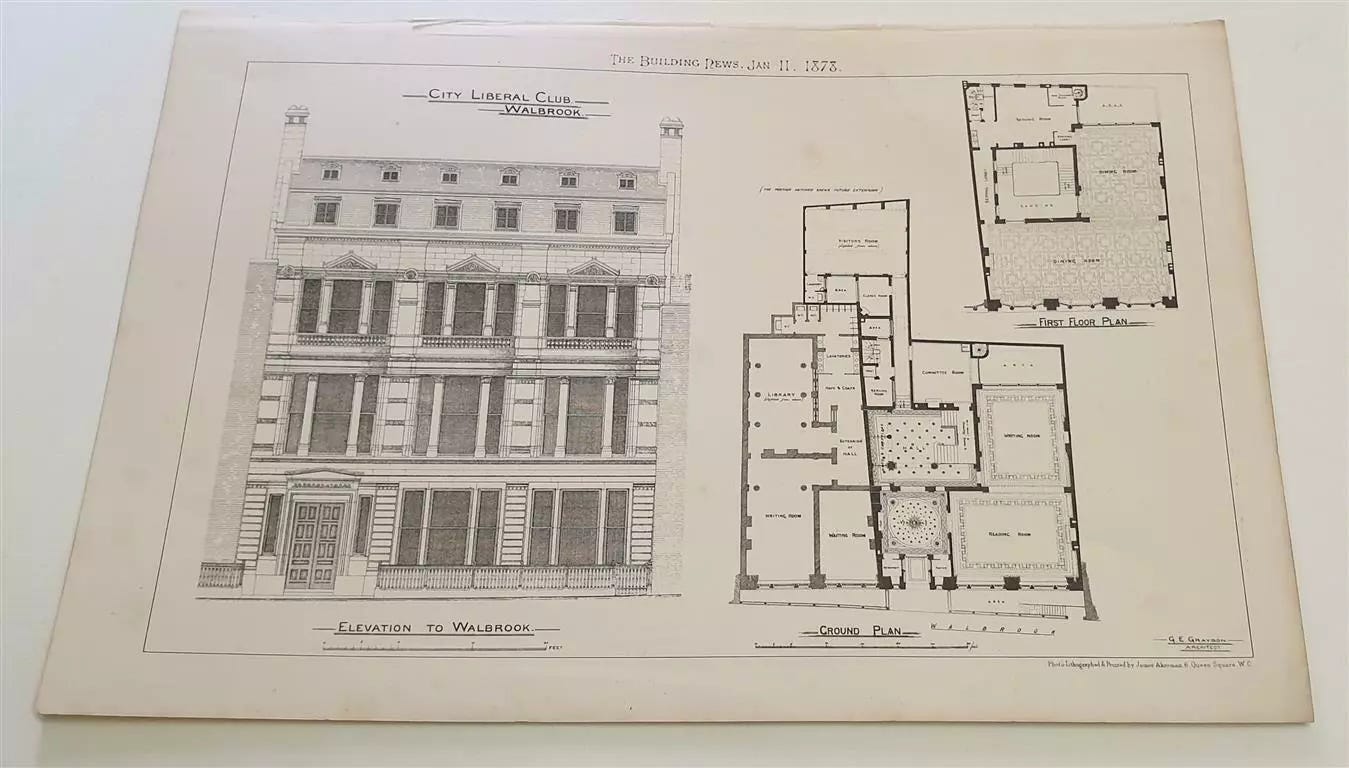

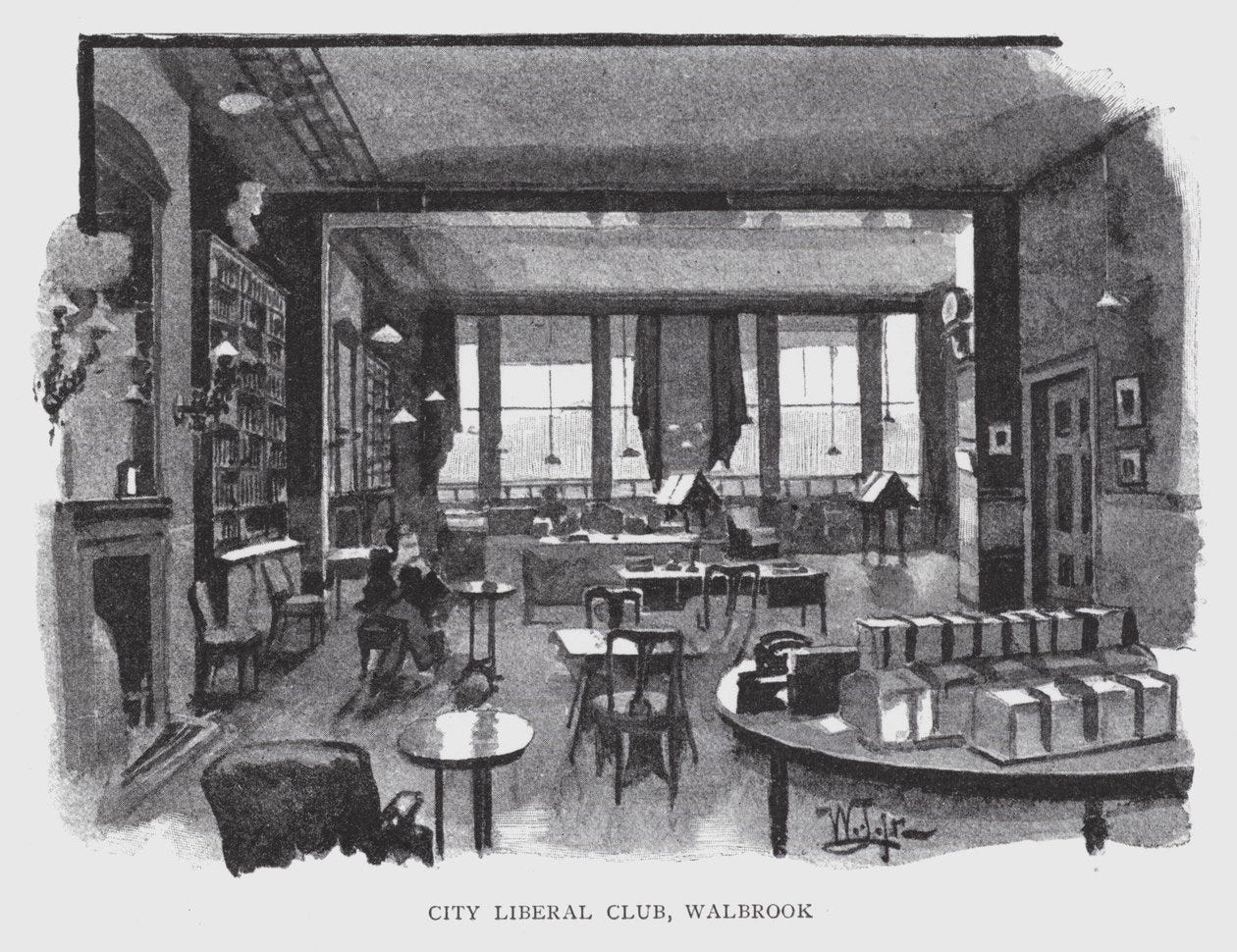
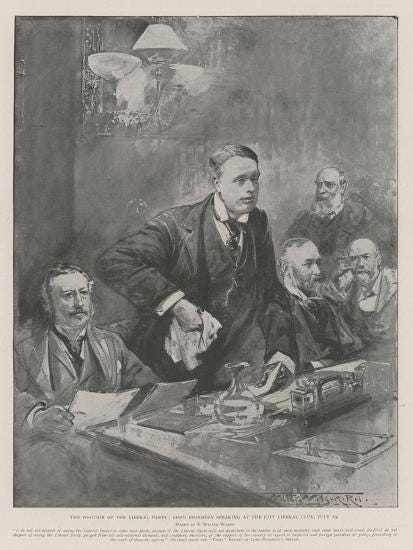

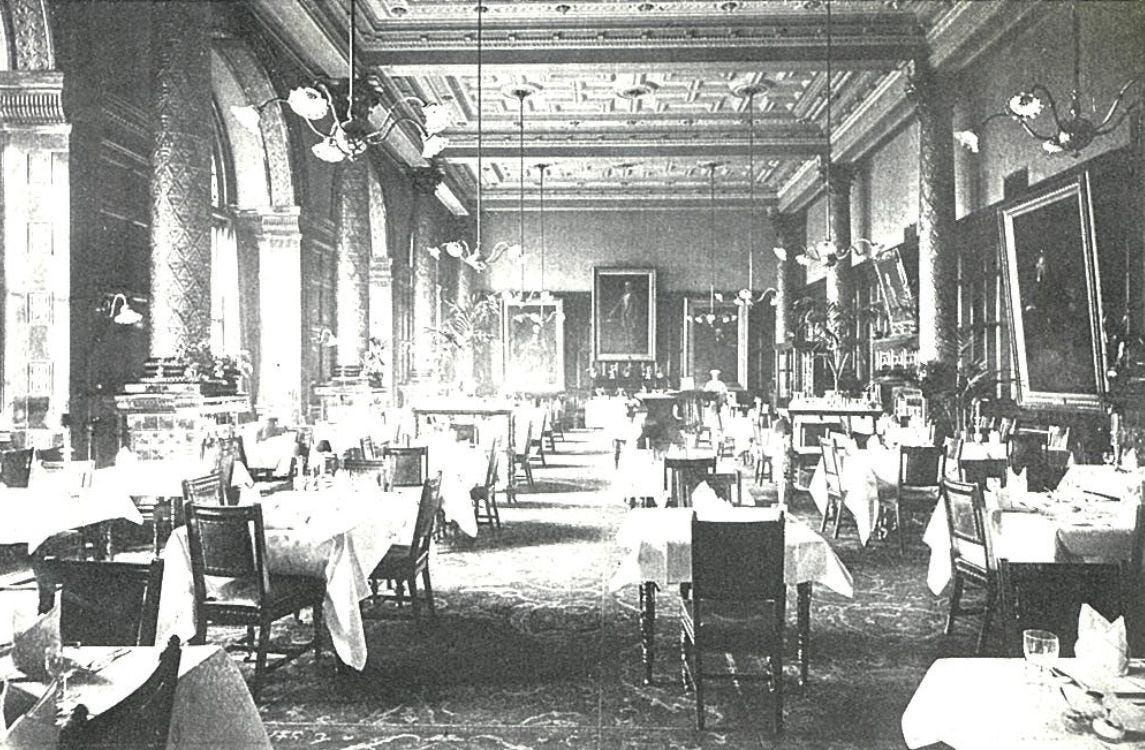
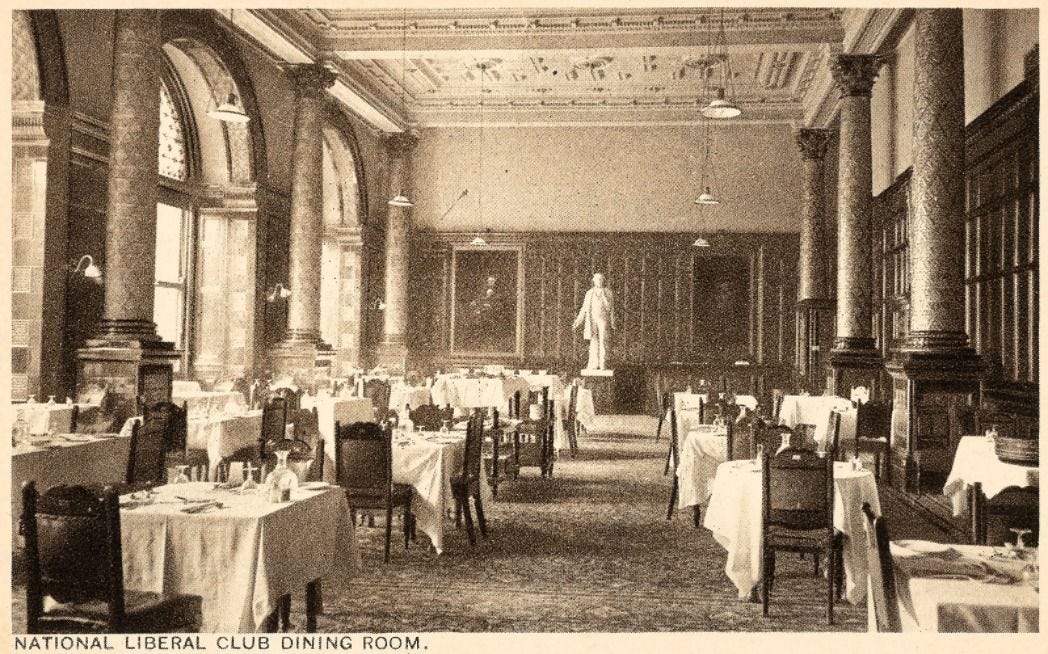
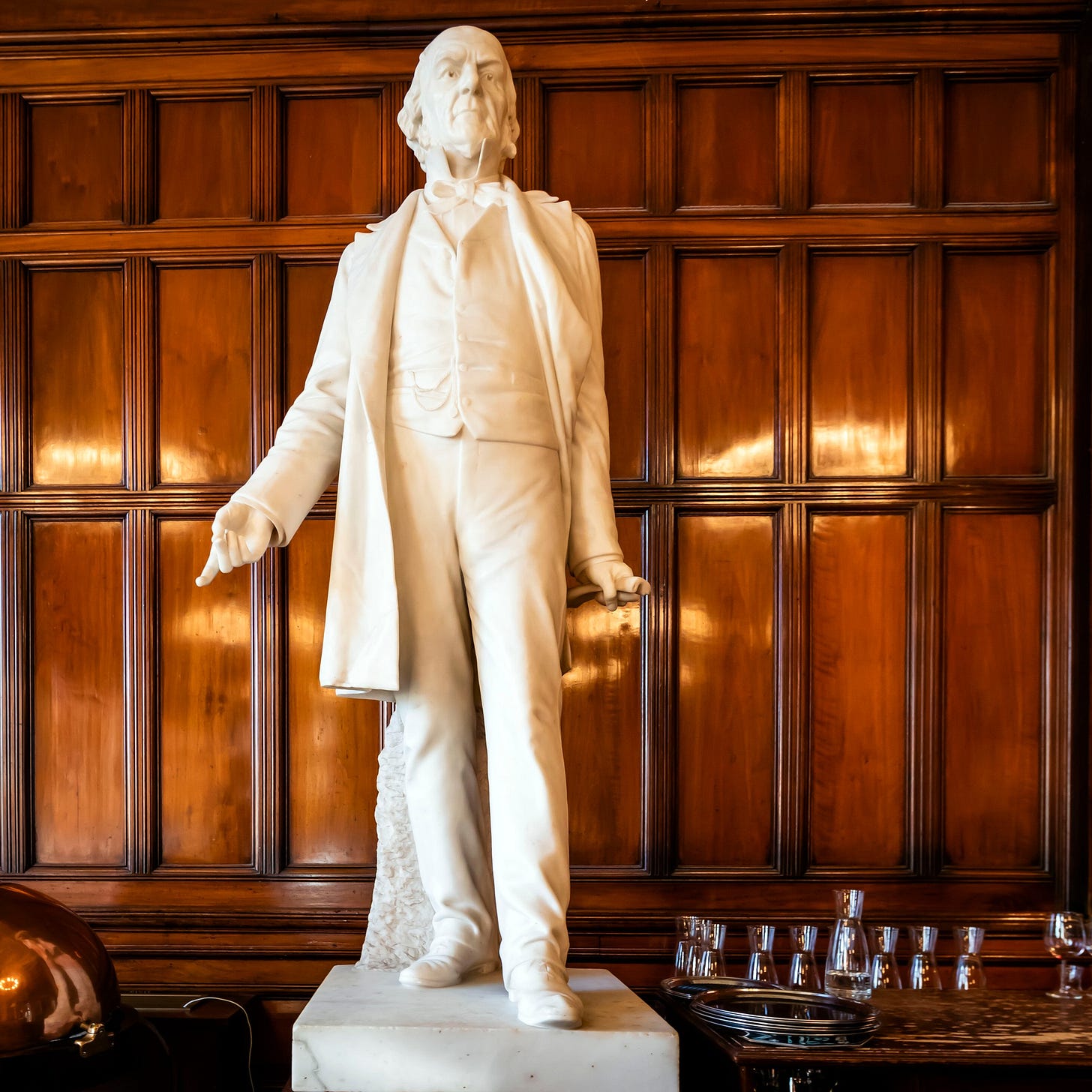
It’s almost 50yrs since my first visit to London and the only time I stayed in the National Liberal Club. My abiding memory of the NLC was the stately spiralling staircase with the William Gladstone statue in the foyer at its base, That and a big, dark bedroom, cavernous corridors and the absence of electrical fittings - there was no plug in our room & my wife had to use her hair drier standing outside in the hall. But all is changed now.